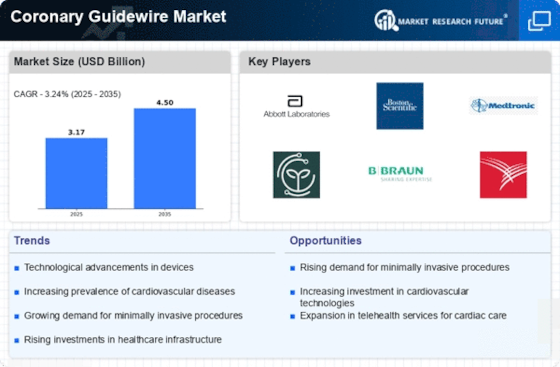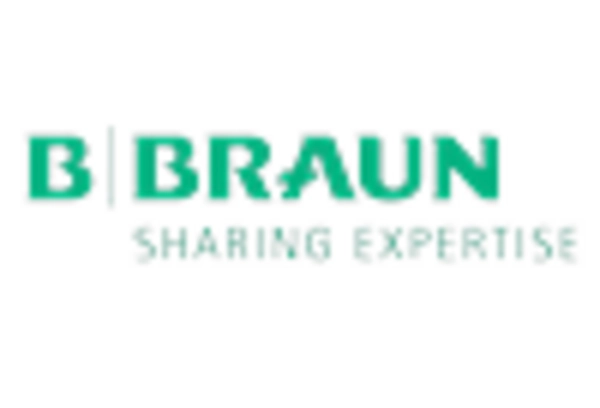Rising Incidence of Cardiovascular Diseases
The increasing prevalence of cardiovascular diseases is a primary driver for the Coronary Guidewire Market. As the population ages, the incidence of conditions such as coronary artery disease and myocardial infarction rises. According to recent statistics, cardiovascular diseases account for a substantial percentage of global mortality, prompting healthcare systems to prioritize effective treatment options. This trend is likely to escalate the demand for coronary interventions, thereby boosting the need for advanced guidewires. The Coronary Guidewire Market is expected to witness significant growth as healthcare providers seek innovative solutions to enhance patient outcomes and reduce procedural complications.
Technological Innovations in Medical Devices
Technological advancements in medical devices are transforming the Coronary Guidewire Market. Innovations such as improved materials, enhanced flexibility, and advanced coatings are leading to the development of next-generation guidewires. These innovations not only improve the performance of guidewires but also enhance the safety and efficacy of coronary interventions. For instance, the introduction of hydrophilic coatings has been shown to reduce friction during procedures, thereby minimizing the risk of vascular damage. As a result, the Coronary Guidewire Market is likely to experience increased adoption of these advanced devices, driven by both healthcare professionals and patients seeking better treatment options.
Rising Awareness and Education on Heart Health
The growing awareness and education regarding heart health are pivotal in shaping the Coronary Guidewire Market. Public health campaigns and educational initiatives are increasingly informing individuals about the risks associated with cardiovascular diseases and the importance of early intervention. This heightened awareness is likely to lead to more individuals seeking medical attention for heart-related issues, thereby increasing the demand for coronary procedures. As a result, the Coronary Guidewire Market is expected to experience growth, as healthcare providers respond to the rising number of patients requiring effective treatment options for cardiovascular conditions.
Growing Demand for Minimally Invasive Procedures
The shift towards minimally invasive procedures is significantly influencing the Coronary Guidewire Market. Patients and healthcare providers increasingly prefer techniques that reduce recovery time and minimize surgical risks. Coronary guidewires play a crucial role in facilitating these procedures, allowing for precise navigation and placement of stents and other devices. Market data indicates that the demand for minimally invasive cardiac interventions is on the rise, which is expected to propel the growth of the Coronary Guidewire Market. This trend reflects a broader movement within the healthcare sector towards less invasive treatment modalities, aligning with patient preferences for quicker recovery and reduced hospital stays.
Increasing Investment in Healthcare Infrastructure
Investment in healthcare infrastructure is a significant driver for the Coronary Guidewire Market. Governments and private entities are allocating substantial resources to enhance healthcare facilities, particularly in emerging economies. This investment is aimed at improving access to advanced medical technologies and treatments, including coronary interventions. As healthcare systems expand and modernize, the demand for coronary guidewires is likely to increase, driven by the need for effective tools in cardiac procedures. The Coronary Guidewire Market stands to benefit from this trend, as enhanced infrastructure facilitates the adoption of innovative medical devices and improves patient care.


















Leave a Comment